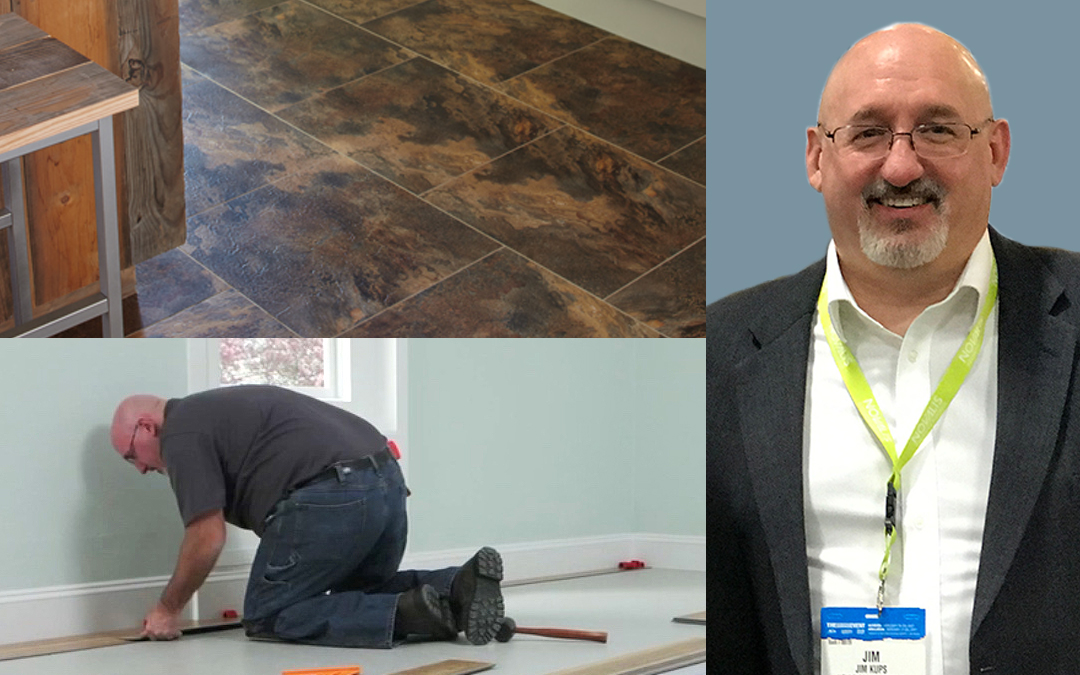Recently, Jim Kups, Technical Manager in North America for Novalis, answered various questions posed by Lauren Moore, editor for Floor Covering Weekly magazine, about the types of luxury vinyl flooring products and the differences in installation methods.
FCW: Tell us a little bit about the different installation methods for LVT.
Kups: LVT is installed in three basic methods: direct glue, floating/clic, and loose lay
- Direct glue installation utilizes adhesives to bond the LVT to approved substrates.
- Floating/clic installations utilize locking mechanisms either in angle/angle, angle/drop or angle/tap method for securing the planks together and creating a floating floor the size of the installed room.
- Loose lay products are designed to stay flat and in place on the subfloor with limited movement and without completely relying on adhesives. Most manufacturers specify a perimeter bonding with adhesives to aid in the stability of the flooring and to keep edge pieces from being forced apart and under base moldings.
FCW: What products does Novalis offer within each of these categories?
Kups: Novalis offers products with all three types of installation methods in our product lines. We also offer floating/clic flooring with rigid cores.
FCW: What are some of the benefits (or pros and cons) of each method?
Kups: Direct glue is probably the best method as it takes the LVT out of the equation by locking it to the substrate. Once a good bond is achieved the product stays in place until the consumer wants a new floor.
Floating/clic flooring offers benefits of easy installation and not having to deal with adhesives. But, environmental factors need to be carefully considered along with the condition of the substrate to ensure proper performance of the floor.
Loose lay has the best of both worlds; some adhesive and ‘floating’ installation. But the best feature here is the overall size of the pieces of flooring. Large format tiles (up to 36”x36”) and planks (9” wide and up to 72” in length) make for a very quick installation.
FCW: Are any of the installation methods better suited for a particular setting? For example, glue-down seems to be the go-to for commercial applications using flexible LVT, but loose-lay or click is more popular with residential, rigid-type products. Why is that?
Kups: Direct glue is a preferred method for commercial applications, but I think all around installers prefer it in residential installations too. I’ve heard that market data says about 70% of installations are utilizing direct glue method. Commercial projects are starting to look at loose lay more as the installations go quicker and the product is just like carpet tiles – easy to replace pieces when moving office layouts or when one gets damaged.
The DIY market does prefer floating/clic products because consumers don’t have to mess with adhesives and renting rollers to put a floor in their home.
Multi-family projects are embracing the rigid core products due to the ease of installation and forgiveness of the product to the substrate and temperatures. Projects can be installed faster which is very important in renovation work.
FCW: Are there any design options (patterns, etc.) that are more easily achieved with one type of product over the other? Can you explain?
I know I seem biased, but direct glue and loose lay offer many more design options over a floating/clic floor. Herringbone, parquet, tiled and irregular patterns are more easily achieved and mixing of sizes is easier too, especially when adding borders. Floating/clic installations are very limited in this regard.

